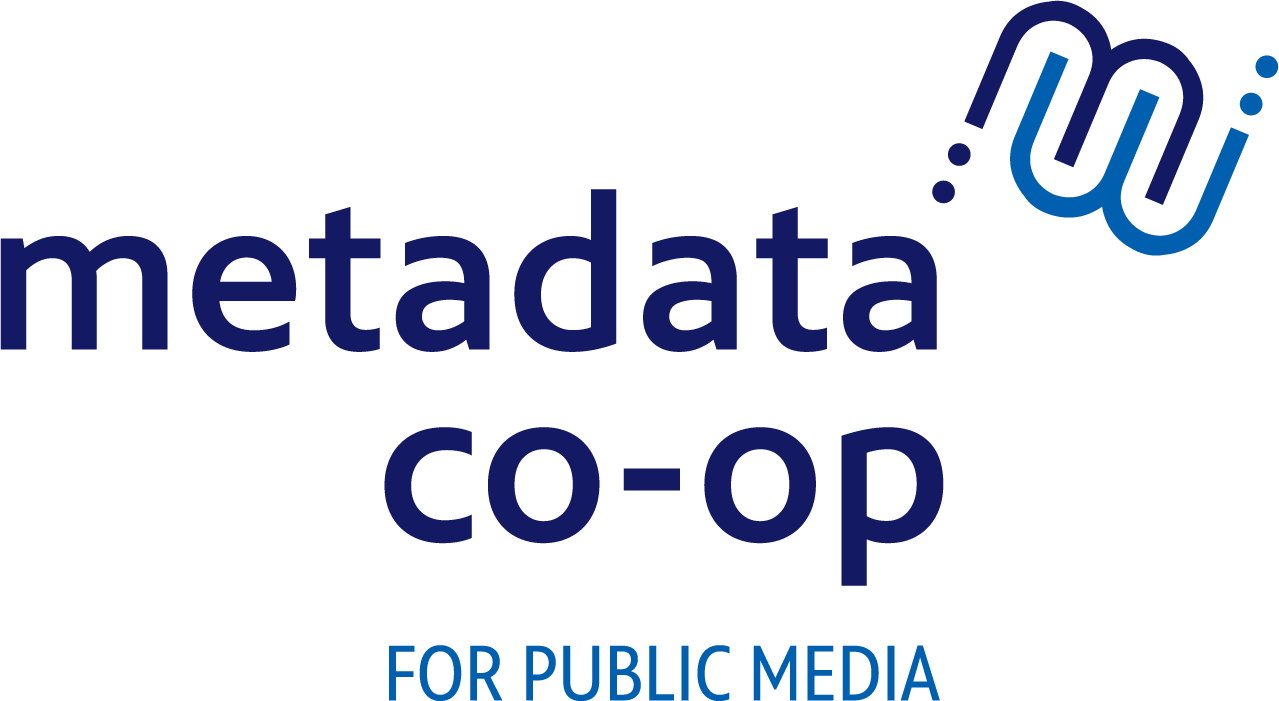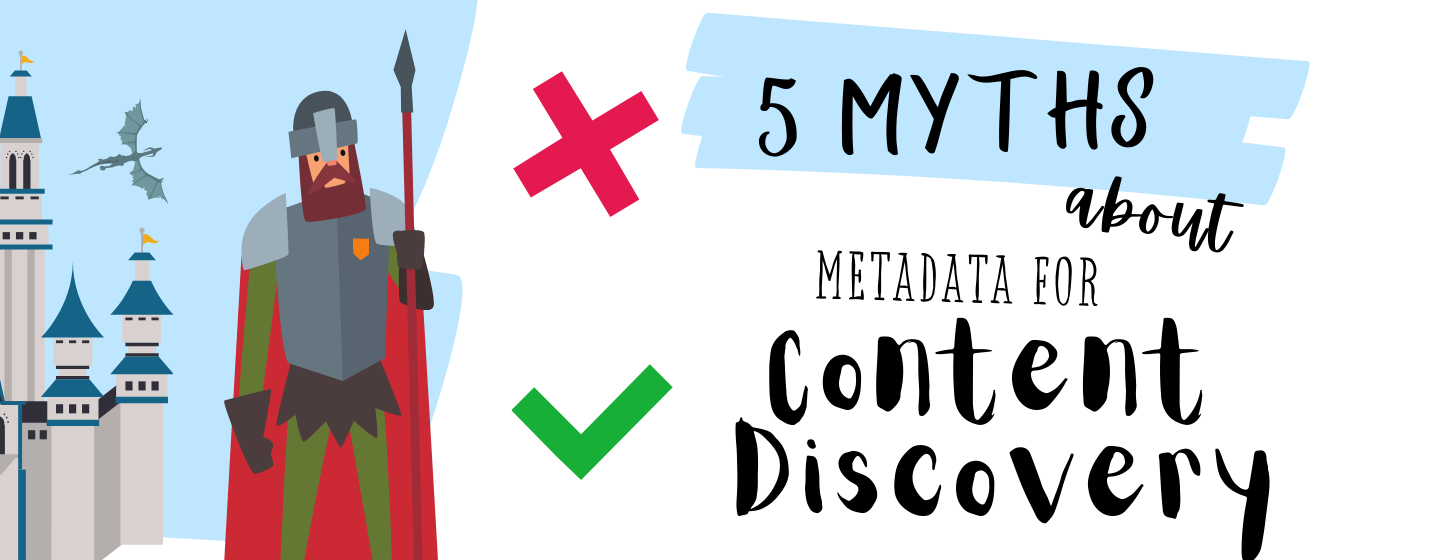"Content Discovery" is the ability of audiences to encounter your content when they’re looking for something to watch. Is your station publishing enough information about your content—i.e., metadata—to make that happen? Here are the five myths keeping some content creators in the Dark Ages of content discovery.
Myth # 1: If Content is King, Metadata is Queen
You’ve probably heard that at least a thousand times, but in the meantime, there were some revolutions, a digital transformation or two, and now we’re all bits of graphed data in a metaverse overflowing with content. So forget the monarchy—nobody tells audiences what or when to watch, and a very big factor in what they choose to watch is what they happen to find.
In today's "Data Democracy," metadata is the great equalizer when it comes to content discovery. It doesn’t take money to achieve a baseline of visibility—it just takes metadata, delivered the right way, at the right time—which beats making your audience go on an hour-long quest for something to watch!
Myth # 2: Program Listings are the Holy Grail
Once upon a time, it was true that schedule-driven program listings were the primary vehicle for disseminating program metadata. While listings are still extremely important, they are evolving quickly, and they are no longer the only game in town.
Listings have evolved. New metadata elements, or fields (mood, setting, keywords) have grown in importance—as has artwork. Which means that if you're still doing listings the way you did them just 5 years ago, it's time for a refresh. (Attend our Metadata for Content Discovery 101 webinar for a look at the new best practices for program listings.)
And, too, program listings are not the only vehicle that matters when it comes to achieving content discovery in a digital world. Cord-cutting is on the rise as audiences embrace streaming platforms in a big way (see the TiVo Q4 2020 Video Trends Report.)
All of which means that there are very important new consumers of your metadata: robots. Open web data sources such as IMDb, and Wikipedia (to name but two examples), have an enormous impact on how easy it is for the robots to discover, identify, and recommend or display your content in online search and recommendation results. Many new search and discovery partners and video platforms leverage openly accessible and industry-standard metadata to make their services work, so you'll be at a disadvantage if you're not feeding their robots the right information, formatted the right way, at the right time.
Myth # 3: Metadata Providers Will Slay the Dragon
See # 2, above. Metadata providers such as Gracenote, RedBee, TiVo, and others are very important industry partners, and you should keep sending your metadata to them, because they, in turn, send it out to a wide range of outlets, from cable EPG/IPGs to Smart TVs.
But relying exclusively on proprietary providers to ensure content discovery doesn’t give you enough control over what is increasingly one of your most important business assets. In fact, metadata providers typically enhance your records in ways you may not even be aware of. And their enhancements do aid content discovery—but once they've modified your metadata, they "own" those records (and the unique identifiers they give them). They do this because there is a big market for your metadata, the unique identifiers they assign, and their enhancements.
Content discovery is now too complex and too important to leave entirely in the hands of the marketplace. The more industry-standard and openly accessible your metadata is, the more discoverable your content will be. Proprietary metadata providers are rich gardens of metadata—but they’re walled gardens—you have to pay to get in and see even your own contributions to that garden.
Attend our "Introduction to EIDR webinar " to understand the importance of making your program metadata openly accessible and machine readable via the nonprofit, industry-standard Entertainment Identifier Registry, or EIDR. (And if you're wondering what EIDR is, read this for a quick explanation.)
Myth # 4: AI and Machine Learning Will Slay the Dragon
Actually, AI and Machine Learning require a solid foundation of consistent, standardized metadata to work at all. The use of AI and ML for automation and content discovery is accelerating—but content creators who don’t work from "a single source of metadata truth" across departments won’t be in a position to benefit easily, because they will continue to inefficiently create redundant collections of metadata, and the number of discrepancies will continue to multiply, until standardizing and harmonizing all of those sources becomes too complex to happen at all. (If you don't know which sets of metadata to trust, AI and machine learning applications won't know, either.)
Nobody is going to slay this dragon for us, because in the real world (see # 5 below) there is no dragon!
Attend the Metadata Co-op's Metadata 102 Webinar, "A Metadata Model for Content Discovery," to learn why adopting an industry-aligned metadata model will help you create a single source of truth, improve content discovery, and ensure that you're ready to leverage the content discovery tools and technologies of the future.
Myth # 5: If We Get This Done, We Will All Live Happily Ever After
This is possibly the biggest myth of all—and that’s good news. There is no dragon, and there is no magical kingdom where nothing ever has to change again.
Aligning with industry standards and putting good metadata management practices in place isn’t something that has to happen overnight, and it’s not a one-and-done project requiring herculean effort. In fact, it's best done slowly and thoughtfully, and with the involvement of staff across your organization.
Like almost all of the most important things in life, metadata management is a process, one that will change over time, and maintaining program metadata is more like tending a garden than slaying a dragon. There's no need for a big up-front investment of time, money, or fancy technology tools.
So set aside your shiny armor, and just start. Sign up for our monthly Metadata Co-op newsletter here so we can let you know about upcoming webinars, downloadable tools, and learning resources—and then visit metadata.pbs.org to get started.
Sources
- “TiVo’s Q4 2020 Video Trends Report,” TiVo Blog (blog) (January 27, 2021): https://blog.tivo.com/news/tivos-q4-2020-video-trends-report/.
- Greco, Janet. “Metadata Is the Answer – and the Problem.” OTT Executive Magazine, no. Fall (December 3, 2019): https://www.broadcastprojects.com/news/metadata-is-the-answer-and-the-problem.
- Roettgers, Janko. “Viewers like You: How PBS Is Adapting to the Streaming Age,” Protocol — The people, power and politics of tech (February 25, 2021): https://www.protocol.com/pbs-streaming-one-click-donations
- Dixon, Colin. “As Viewers Reject Live TV, over-the-Air TV Growth Stalls,” NScreenMedia (blog) (August 31, 2020): https://nscreenmedia.com/live-tv-down-over-the-air-tv-growth-stalls/.




